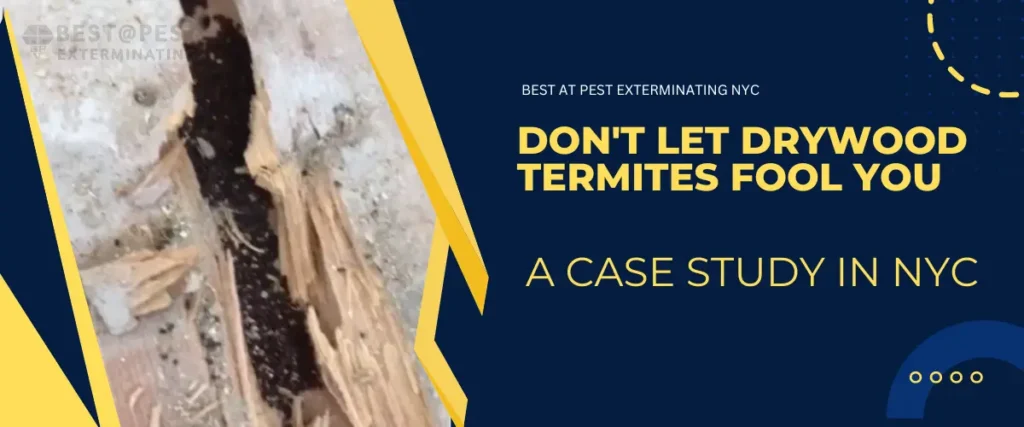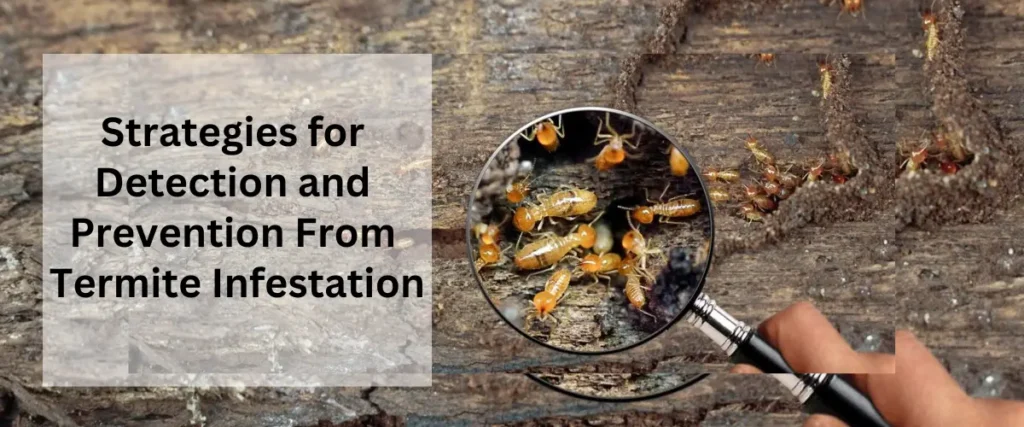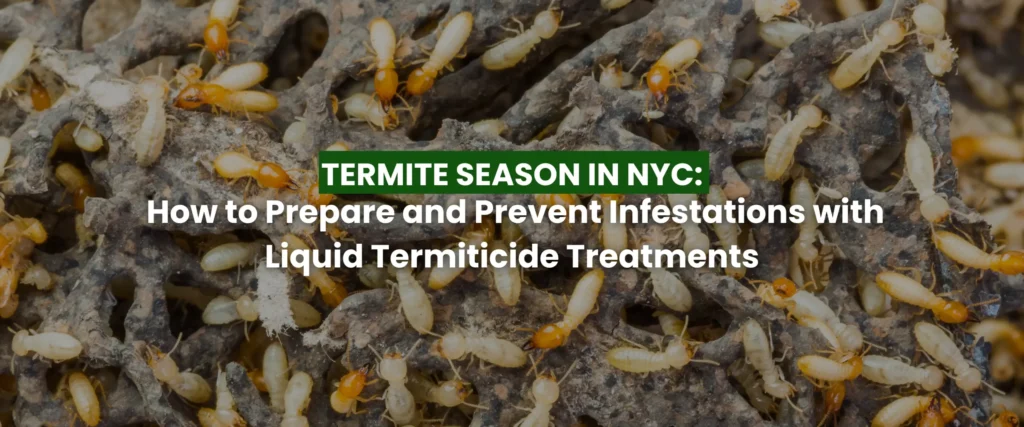
Termite Season in NYC: How to prepare and Prevent Infestation With Liquid Termiticide Treatments
Termite season in New York City marks a time of heightened vigilance for homeowners and property managers. These tiny yet destructive pests can cause significant damage if left unchecked. In this blog, we’ll explore the importance of termite prevention and control, focusing on the efficacy of liquid termiticide treatments in safeguarding your property.
Understanding Termites
A. Overview of Termite Behavior and Habits
Termites are small, social insects that play a crucial role in ecosystems by breaking down dead plant material. However, they can also be destructive pests when they invade human structures. Understanding their behavior and habits is essential for effective pest control.
1. Social Structure:
Termites live in colonies with a highly organized social structure. Each colony consists of workers, soldiers, and reproductive individuals (kings and queens). Workers are responsible for foraging, building and maintaining the nest, and feeding other colony members. Soldiers defend the colony against predators.
2. Feeding Habits:
Termites primarily feed on cellulose, found in wood and plant material. They can cause significant damage to wooden structures, including buildings, furniture, and trees. Despite their small size, large termite colonies can consume substantial amounts of wood, leading to costly repairs.
3. Nesting Behavior:
Termites build elaborate nests, often underground or within wooden structures. These nests provide protection from predators, regulate temperature and humidity, and serve as breeding grounds for new colony members. Termite colonies can remain hidden for years, making early detection challenging.
B. Common Signs of Termite Infestation
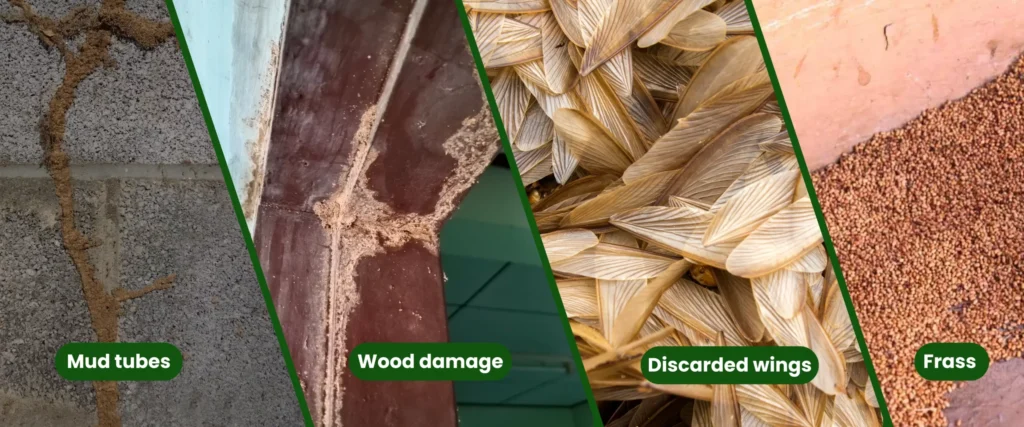
Detecting termite infestations early is crucial for minimizing damage and treatment costs. Knowing the common signs of termite activity can help homeowners identify potential problems before they escalate.
1. Mud Tubes
Subterranean termites construct mud tubes along surfaces such as walls, foundations, and pipes to provide moisture and protection as they travel between their nest and food sources. These tubes are a clear indication of termite activity and should be promptly addressed.
2. Wood Damage:
Termites feed on wood from the inside out, leaving behind hollowed-out tunnels or galleries. Signs of wood damage may include sagging floors, hollow-sounding timber, or visible tunnels in wooden structures. Pay close attention to areas where wood comes into contact with soil or moisture, as these are prime entry points for termites.
3. Discarded Wings:
During their swarming season, reproductive termites (alates) emerge from the colony to mate and establish new colonies. After mating, alates shed their wings, leaving behind piles of discarded wings near windowsills, light fixtures, or other light sources. Finding discarded wings indoors is a strong indicator of an active termite infestation.
4. Frass:
Termite droppings, known as frass, resemble tiny wood pellets and may accumulate near infested areas. Frass is often found in piles or mounds and can indicate the presence of drywood termites. Regularly inspecting potential termite entry points and monitoring for frass can help identify infestations early.
C. Importance of early detection and prevention
1. Cost Savings
Detecting termites early allows for swift intervention, preventing extensive damage to structures. The cost of repairing termite damage can escalate rapidly if left unchecked, often far exceeding the expenses associated with prevention and early treatment.
2. Structural Integrity:
Termites can compromise the structural integrity of buildings by feeding on wooden elements such as support beams, floors, and walls. Early detection helps preserve the integrity of these structures, ensuring the safety of occupants and preventing costly repairs or even structural failure.
3. Property Value Preservation
Termite infestations can significantly diminish the value of properties. Detecting and addressing termite issues promptly can help maintain property values and prevent potential complications during real estate transactions.
4. Peace of Mind:
Knowing that your property is free from termite infestations provides peace of mind. Regular inspections and preventive measures offer reassurance that your home or business is protected against the damaging effects of termites.
5. Environmental Impact:
6. Long-Term Savings:
Investing in preventive measures, such as installing termite barriers or conducting regular inspections, can save money in the long run by reducing the likelihood of termite infestations and associated repair costs.
Liquid Termiticide Treatments
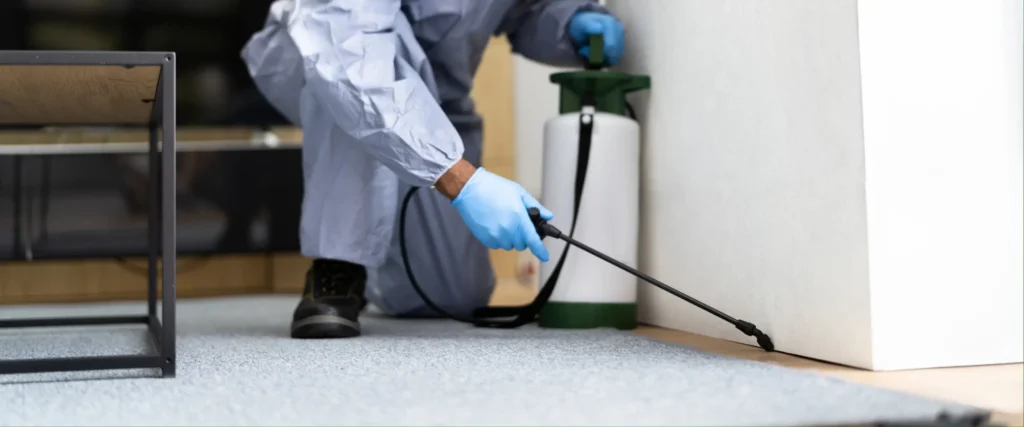
A. What are liquid termiticides?
Liquid termiticides are termite control chemicals solution formulated to eradicate and prevent termite infestations in structures. These solutions are applied to the soil around and beneath buildings to create a barrier that termites cannot penetrate.
B. How do liquid termiticides work?
Liquid termiticides work through several mechanisms. When applied to the soil, they create a protective barrier that either repels termites upon contact or kills them upon ingestion. Additionally, termites that come into contact with the treated soil can transfer the termiticide to other members of their colony, leading to further eradication.
C. Advantages and disadvantages of liquid termiticide treatments
Advantages:
- Effective long-term termite control:
Properly applied liquid termiticides can provide protection against termite infestations for several years.
- Broad-spectrum protection:
Liquid termiticides can target various termite species and other wood-destroying pests.
- Minimal disruption:
Application of liquid termiticides typically requires minimal disruption to the structure and its occupants.
Disadvantages:
- Environmental concerns:
Some liquid termiticides contain chemicals that can be harmful to the environment and non-target organisms.
- Professional application required:
Effective application of liquid termiticides often requires specialized equipment and knowledge, necessitating professional intervention.
- Limited effectiveness against above-ground infestations:
Liquid termiticides are primarily effective against subterranean termites and may not adequately address above-ground infestations.
D. Popular liquid termiticide
Fipronil: It is a widely recognized liquid termiticide and is highly effective against termites and is transferable within termite colonies.
- Imidacloprid: Imidacloprid target termites both through contact and ingestion.It is often used for pre-construction termite prevention as well as post-construction treatment.
- Chlorantraniliprole: Chlorantraniliprole is known for its environmentally friendly profile while still being highly effective against termites.
What is the Best Chemical for Termite Control
- Broad-spectrum activity: The chemical used for termite control should target various termite species to ensure comprehensive protection against infestations.
- Long-lasting residual effect: An effective termite control chemical should provide extended protection, ideally lasting for several years after application.
- Transferability: The chemical should be transferable within termite colonies, allowing it to reach and eliminate hidden nests and colonies.
- Non-repellent formulation: Non-repellent chemicals are preferable as they do not deter termites upon contact, ensuring that the entire colony is exposed to the treatment.
- Environmentally friendly: Opt for chemicals with minimal environmental impact, such as those with low toxicity to non-target organisms and minimal persistence in the environment.
- Minimal odor and low toxicity: Chemicals with low odor and toxicity are preferred, especially for indoor applications, to ensure safety for occupants and pets.
- Ease of application: Choose chemicals that are easy to apply and compatible with various application methods, including soil treatments, foams, or baits.
- Approved and regulated: Ensure that the chemical is approved for use by relevant regulatory agencies and complies with safety and efficacy standards for termite control.
- Professional recommendation: Seek guidance from pest control professionals or entomologists to select a chemical that is suitable for your specific termite infestation and environmental conditions.
- Warranty or guarantee: Look for products backed by a warranty or guarantee from the manufacturer or pest control provider, offering assurance of effectiveness and support in case of treatment failure.
Termite Renewals: Maintaining Protection Over Time
A. Importance of regular termite inspections and treatments
- Early detection: Regular termite inspections allow for the early detection of termite activity or potential infestations, enabling prompt intervention to prevent extensive damage to structures.
- Prevention of reinfestation: Routine treatments as part of renewal programs help prevent reinfestation by targeting any new termite activity that may arise over time.
- Cost-effectiveness: Investing in regular inspections and treatments can save homeowners money in the long run by mitigating the need for costly repairs due to termite damage.
- Peace of mind: Knowing that your property is regularly monitored and treated for termites provides peace of mind and assurance that your investment is protected.
B. How to ensure continuous termite protection
- Enroll in a termite renewal program: Sign up for a termite renewal program offered by a reputable pest control company to ensure ongoing protection against termites.
- Schedule regular inspections: Arrange for periodic termite inspections by trained professionals to monitor for any signs of termite activity or damage.
- Implement preventative measures: In addition to inspections and treatments, implement preventative measures such as moisture control, proper drainage, and sealing cracks and crevices to reduce the risk of termite infestation.
- Maintain records: Keep detailed records of termite inspections, treatments, and any repairs or modifications made to your property to track termite activity and ensure continuity of protection.
- Stay informed: Stay informed about termite control best practices and any new developments in termite treatment technologies or products to make informed decisions about maintaining termite protection over time.
Conclusion
As termite season approaches, it’s essential to take proactive measures to safeguard your property against infestations. Liquid termiticide treatments offer effective protection against these destructive pests, helping you maintain the structural integrity of your home or building. By understanding the importance of early detection, choosing the right termiticide, and investing in ongoing protection, you can mitigate the risk of termite damage and enjoy peace of mind for years to come. Don’t wait until it’s too late—take action today to protect your investment and preserve your property’s value.

